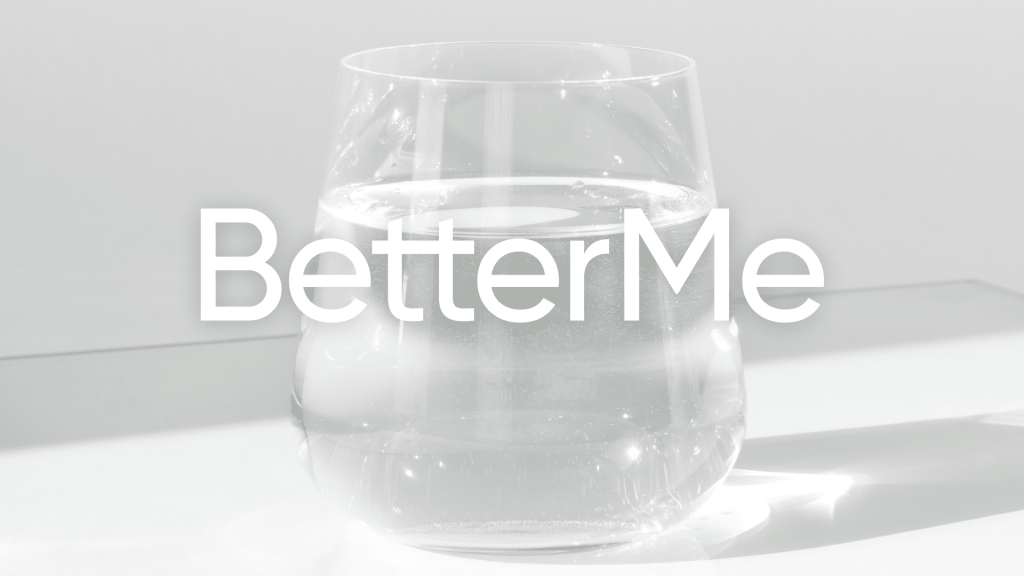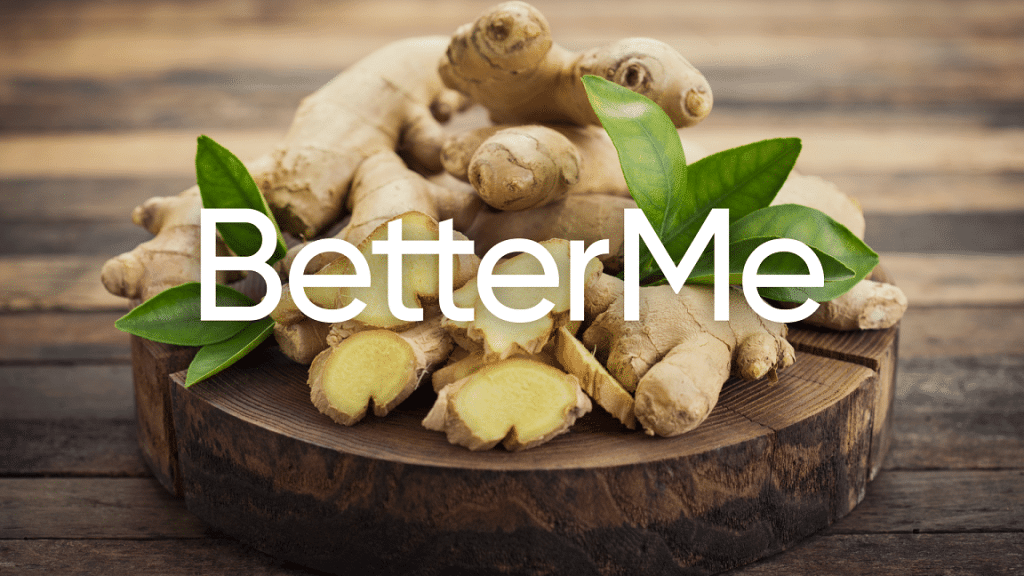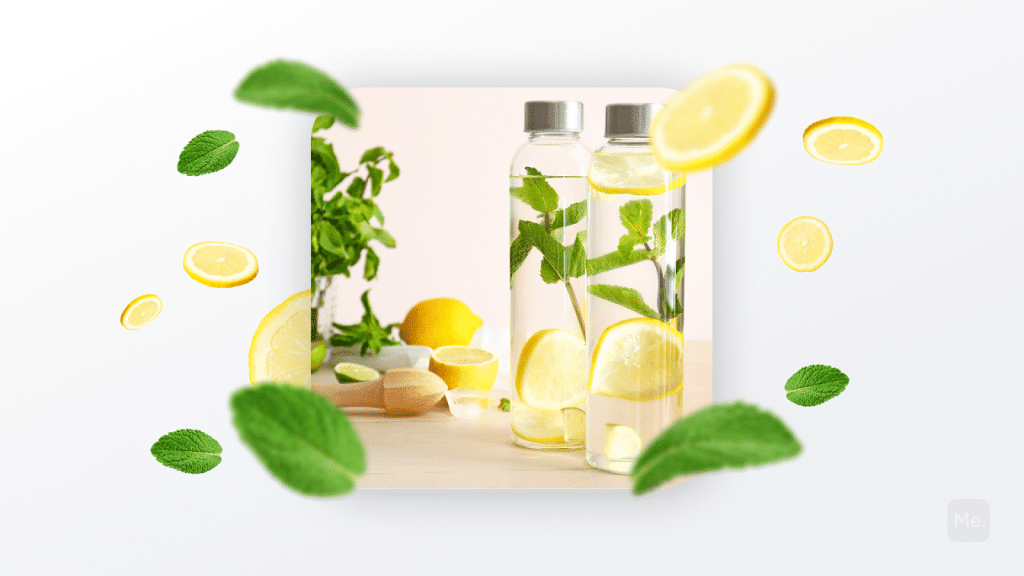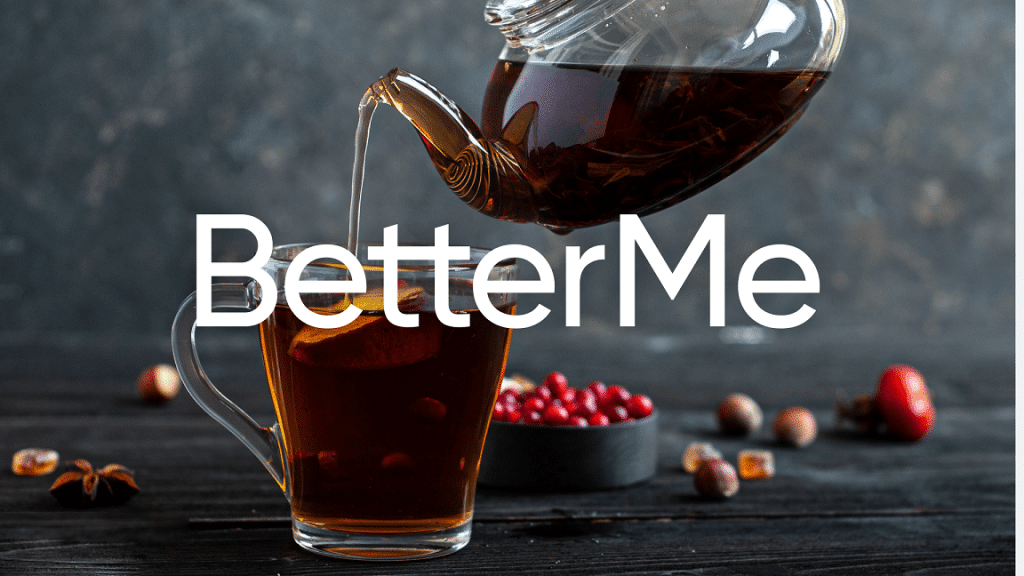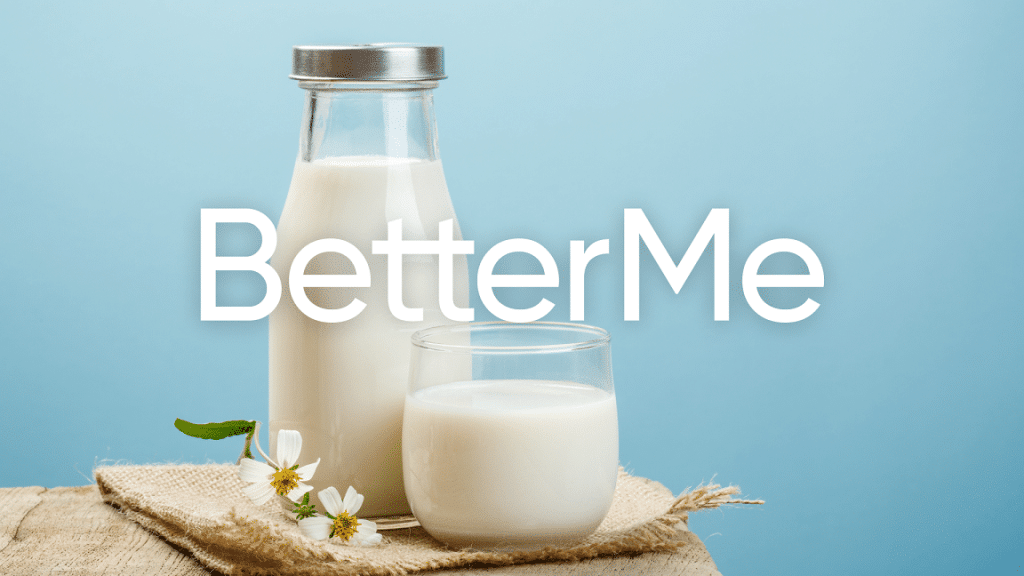Painful periods can be quite a nightmare. And along with the bloating, mood fluctuations, and nausea, those days during your period can seem forever. You may also experience crazy and insatiable food cravings for sugary and salty foods.
Get your personalized
meal plan!
Most painkillers provide relief for periods but have you ever thought of using natural remedies instead? There are several foods and drinks that are said to help with period pain and help keep your energy levels up. We explore drinks that might help with period cramps and those you should avoid.
10 Natural Remedies For Menstrual Cramps
About 95% of women of reproductive age are affected by premenstrual syndrome (PMS) (15). Common symptoms of premenstrual syndrome include mood swings, food cravings, increased appetite, fatigue, bloating, diarrhea, headache, and breast tenderness. The severity of these symptoms usually varies from one woman to another.
So, what is responsible for premenstrual syndrome? Four main hormones regulate the menstrual cycle – progesterone, estrogen, luteinizing hormone, and follicle-stimulating hormone. The fluctuations in progesterone and estrogen levels during the second phase of the menstrual cycle just before your period are what trigger PMS symptoms (13).
When does PMS start? Symptoms of premenstrual syndrome begin as early as 7 to 10 days before your period. The severe form is called premenstrual dysphoric disorder (PMDD) and usually requires medical attention. In some women, some of these symptoms persist until two or three days into their periods.
Painful menstruation is referred to as dysmenorrhea. Cramps before period are very common and even during the first few days of your menstrual cycle. But, what causes period cramps?
Cramping is usually a result of prostaglandin, a chemical that controls inflammation and perception of pain (12). This chemical is produced by the lining in the uterus and causes the uterine muscles and blood vessels to contract. During your period, the uterus contracts to expel its lining.
On the first day of your menses, the prostaglandin levels are high, and the cramps are more intense. However, as the bleeding continues and the uterus lining is shed, the prostaglandin levels drop. The pain, therefore, lessens after the first few days.
What helps with cramps? Pain relief medicines such as paracetamol and ibuprofen help relieve period pain. Anti-inflammatory drugs such as ibuprofen help relieve cramps as they inhibit prostaglandin synthesis. Fortunately, you don’t always have to take painkillers for cramps; there are several beverages that may also help.
Read More: Foods That Help With Period Cramps, According To A Nutritionist
Here’s how to get rid of period cramps using these amazing drinks:
 Water
Water
Water seems to be the solution for everything from weight loss to skin health. With providing relief for menstrual cramps, drinking water might seem a little odd. Don’t take water just when you are exercising but stay properly hydrated throughout your period. Water may help reduce the pain intensity during your menses (21).
Drinking water also helps prevent bloating, which is very uncomfortable and can be accompanied by pain. During your period, it is advised that you drink warm water. Warm water increases blood flow and helps relax your muscles. This can help lessen period cramping caused by uterine contractions.
Some women also vomit and have diarrhea alongside experiencing cramps. In such cases, it is also important to replace lost fluids by drinking a lot of water. You can add lemon or mint to the water if that helps you drink more of it.
 Peppermint Tea
Peppermint Tea
Herbal teas are also great for menstrual cramps. Peppermint tea is made using the leaves of the peppermint plant. Peppermint contains menthol, a compound with a strong scent and has several possible health benefits in addition to its cooling effect (10).
Many individuals also use peppermint to provide relief for GI symptoms such as gas and bloating. The menthol in peppermint also helps with smooth muscle spasms, thus reducing stomach cramps (20).
One study investigated the effects of peppermint in young ladies with dysmenorrhea. The peppermint oil capsules were as effective as mefenamic acid at reducing period pain (7). Drinking peppermint tea may therefore help with menstrual cramps.
 Ginger Tea
Ginger Tea
Ginger is considered a miracle herb given its many potential health benefits, including treating indigestion, improving brain function, and helping fight infections. It is a great tea for menstrual cramps. Ginger tea is brewed using the tasty, spicy ginger root.
This herb has anti-inflammatory properties, which may help reduce period pain and bloating (3). Several studies observed that ginger is as effective as drugs such as ibuprofen and mefenamic acid at relieving menstrual cramps (6). In one study, ginger was more effective at reducing the intensity and duration of menstrual cramps than placebo (4).
Ginger also helps with nausea and morning sickness. It is important to note that ginger may have mild side effects such as heartburn. You can add some lemon and honey to your ginger tea to make it more enjoyable.
 Lemon Balm Tea
Lemon Balm Tea
Lemon balm tea is made using the leaves of lemon balm. This herb belongs to the mint family and has a lemon flavor and scent. It is also a great tea for menstrual pain relief.
Lemon balm can help ease PMS symptoms. It is a great source of antioxidants and has anti-inflammatory properties. It also possesses antispasmodic properties that help relax smooth muscles.
In one study, a group of young women was selected to receive either lemon balm or placebo. Researchers observed that lemon balm reduced the severity of symptoms associated with dysmenorrhea, including cramps (19). You can try some lemon balm tea and see if it works for you.
Yanking yourself back in shape has never been so easy with our game-changing fitness app! Start transforming your life with BetterMe!
 Chamomile Tea
Chamomile Tea
Another ingredient that can do wonders during your period is chamomile. It is commonly used to ease period cramps and other PMS symptoms. Chamomile tea is made from dried flower heads of the chamomile plant.
Chamomile has antispasmodic and anti-inflammatory properties that may help relieve period pain. A compound known as apigenin present in chamomile tea helps reduce the effects of excitatory neurotransmitters and hormones, helping soothe the sympathetic nervous system (5).
This herb is considered generally safe for consumption. Much as this is rare, it can trigger adverse reactions in individuals who are allergic to plants in the daisy family. As long as you are not allergic, taking two cups of chamomile tea a day should be enough to help with menstrual cramps.
Smoothies
Taking smoothies is a great way to get more fluids into your body. Smoothies are primarily made from fruits and vegetables – they can be just fruits or a combination of the two. Smoothies that help with period pain depend on the ingredients you use.
The first great fruit to use in smoothies is bananas. Bananas are a great source of fiber which may help smoothen your bowel movements and help with bloating. They are also a great source of magnesium that helps reduce the severity of menstrual cramps (18).
You can also prepare a kale or spinach smoothie. Both these vegetables are rich in magnesium. Magnesium is believed to reduce the intensity of menstrual cramps by reducing prostaglandins’ synthesis. An increased intake of fruits and vegetables is associated with a reduction of menstrual pain (11).
Try experimenting with different smoothie recipes. You can also use pumpkin seeds, broccoli, and avocados. It is best to prepare your smoothies at home as most premise smoothies are filled with sugar which is not good for your health.
 Green Tea
Green Tea
Green tea is yet another amazing beverage with several health benefits. It is made from dried unaged Camellia sinensis leaves. This drink was popular in ancient China and is still popular and a favorite of many.
Like other herbal teas, green tea has antioxidant compounds and anti-inflammatory effects, which may help with bloating and menstrual cramps. It also contains a compound called L-theanine that can help you feel more relaxed and calm by counteracting the effects of caffeine-induced arousal (2). One review observed that drinking green tea was linked to decreased period pain compared to other types of tea (1).
Read More: Is Matcha Or Green Tea Better For Weight Loss? Breaking Down The Differences
Fresh Fruit Juices
Several fruits help with period pain. Fruits are a great source of vitamins, antioxidants, and minerals such as magnesium. Fruit juices can be more palatable during this uncomfortable period.
High consumption of fruits has associations with less period pain (11). Watermelon juice is an excellent choice. It is delicious, light, and watery, which helps you stay hydrated. It is a great way to get small amounts of sugars into your body to help with the cramping.
Orange juice is also another great alternative. Oranges are a rich source of vitamin C, which helps absorb iron from foods into the bloodstream. Oranges also contain potassium and magnesium, which may help relieve period cramps. Some freshly squeezed orange juice is thus good for you.
Lemons are also a great source of vitamin C. They may, therefore, help with iron absorption. They might also help with bloating. And just like other fruits, lemons are an easy way to stay hydrated. You can also speak to your nutritionist about which other fruits are good for you during your period.
Bone Broth
Bone broth indirectly helps with period pain. It is made by boiling the bones of meat in water. Bone broth is a great source of anti-inflammatory antioxidants. It is also a great source of magnesium which helps reduce the severity of the cramps.
Bone broth may also help you get a goodnight’s sleep. The glycine in bone broth may be helpful for improving sleep. And given the fatigue and cramping that accompany painful periods, a good night’s rest might be just what you need (22).
Raspberry Leaf Tea
Yet another amazing tea that helps with painful periods is raspberry leaf tea. As the name suggests, this tea is made from the leaves of raspberry plants. It, however, does not taste like raspberry but has a mild taste like black tea.
For centuries, raspberry leaf tea has been used as a remedy for period pain (17). The raspberry leaf is a good source of magnesium, calcium, and antioxidants. It may therefore reduce the intensity of period cramps and leave you feeling better. There’s no harm in finding out if this tea provides some relief for you.
Other types of tea that may provide menstrual pain relief include oolong tea, thyme tea, fennel tea, and cinnamon tea.
If you wish to cinch your waist, tone up your bat wings, blast away the muffin top – our fitness app was created to cater to all your needs! BetterMe won’t give excess weight a chance!
 Drinks To Avoid During Your Period
Drinks To Avoid During Your Period
Just like there are foods and drinks good for you during your period, there are those that you should stay away from. Now that we know how to get rid of cramps let us look at what you should stay clear of. These drinks cause bloating and water retention, so it is best to avoid them.
Coffee
Most people cannot go for a day without drinking coffee. Some may even experience headaches from caffeine withdrawal. If you are one of them, you can reduce the amount of coffee you take when you are on your period as it makes period pain worse (16).
The caffeine in coffee can cause bloating, water retention, and worsen headaches. Caffeine is a stimulant that can make you feel anxious, a feeling that may make your mood swings worse. Coffee can also cause digestive issues such as diarrhea. You can take decaffeinated coffee instead.
Alcohol
You might be in the tendency to go out for a few bottles of beer every weekend or have a glass of wine or two before you go to bed. When it is that time of the month, it is best to stay clear of any alcoholic drink. Alcohol can have several negative effects on your body (14).
For instance, alcohol can dehydrate you, thus cause bloating and worsen headaches. It can also cause nausea and vomiting. You may also have a hangover after a night of too much drinking. This may worsen the period symptoms such as fatigue, nausea, diarrhea, and vomiting.
 Sugary Drinks
Sugary Drinks
It is okay to occasionally enjoy your favorite soda or any other sugary drink while on your periods, but you shouldn’t take too much. Too much sugar increases the risk of dysmenorrhea (9). Taking too much sugar can cause a spike in your blood sugar levels that result in a crash. This can worsen your mood.
Mood fluctuations are common during periods. But you do not want to do anything that will leave you feeling more anxious and depressed. So it is best to watch your sugar intake. If you crave a sugary snack, go for something healthy like fruits – grapes, berries, or papaya.
Milk
Taking dairy during your period may not be a smart choice. Milk contains saturated fats that can cause inflammation and potentially worsen period pain. Commercial milk preparations may contain prostaglandins which cause period pain in the first place (8).
Dairy can also cause bloating and diarrhea, especially in lactose intolerant individuals. So, you might want to reduce your intake of milk. Yogurts, cheese, milkshakes, and ice cream should also be taken in moderation as they can worsen period symptoms.
Conclusion
Those few days during your period can seem to last forever because of the mood swings, period pain, headaches, and food cravings. The good thing is that there are a few natural remedies that can provide menstrual pain relief. Along with leafy vegetables and salmon, fruit juices and smoothies are great diet choices during your period.
Several herbal teas, including green, ginger, peppermint, chamomile, and lemon balm tea, can help with menstrual cramps. If you are taking any medications, talk to your doctor about herbal teas or remedies before you try them. It is also important to stay hydrated. Remember to stay away from alcohol, coffee, sugary drinks and eat well-balanced meals to keep your energy levels up.
DISCLAIMER:
This article is intended for general informational purposes only and does not address individual circumstances. It is not a substitute for professional advice or help and should not be relied on to make decisions of any kind. Any action you take upon the information presented in this article is strictly at your own risk and responsibility!
SOURCES:
- Association of tea drinking and dysmenorrhoea among reproductive-age women in Shanghai, China (2013-2015): a cross-sectional study (2019, pubmed.ncbi.nlm.nih.gov)
- Beneficial Properties of Green Tea Catechins (2020, ncbi.nlm.nih.gov)
- Bioactive Compounds and Bioactivities of Ginger (Zingiber officinale Roscoe) (2019, pubmed.ncbi.nlm.nih.gov)
- Effect of Zingiber officinale R. rhizomes (ginger) on pain relief in primary dysmenorrhea: a placebo randomized trial (2012, ncbi.nlm.nih.gov)
- Efficacy of Chamomile in the Treatment of Premenstrual Syndrome: A Systematic Review (2019, ncbi.nlm.nih.gov)
- Efficacy of Ginger for Alleviating the Symptoms of Primary Dysmenorrhea: A Systematic Review and Meta-analysis of Randomized Clinical Trials (2015, pubmed.ncbi.nlm.nih.gov)
- Evaluation of mint efficacy regarding dysmenorrhea in comparison with mefenamic acid: A double blinded randomized crossover study (2016, ncbi.nlm.nih.gov)
- Hormones in Dairy Foods and Their Impact on Public Health – A Narrative Review Article (2015, ncbi.nlm.nih.gov)
- Major dietary patterns in relation to menstrual pain: a nested case control study (2018, ncbi.nlm.nih.gov)
- Menthol-pharmacology of an important naturally medicinal “cool” (2013, pubmed.ncbi.nlm.nih.gov)
- Nutrition as a Potential Factor of Primary Dysmenorrhea: A Systematic Review of Observational Studies (2018, karger.com)
- Period pain: Overview – InformedHealth.org – NCBI Bookshelf (2018, ncbi.nlm.nih.gov)
- Premenstrual syndrome (2011, ncbi.nlm.nih.gov)
- Premenstrual syndrome and alcohol consumption: a systematic review and meta-analysis (2018, ncbi.nlm.nih.gov)
- Premenstrual syndrome – Irene Kwan (2015, ncbi.nlm.nih.gov)
- Prevalence and Correlation between Diet and Dysmenorrhea among High School and College Students in Saint Vincent and Grenadines (2019, ncbi.nlm.nih.gov)
- Red Raspberry Leaf Tea: Are There Health Benefits? (n.d., webmd.com)
- The Effect of Micronutrients on Pain Management of Primary Dysmenorrhea: a Systematic Review and Meta‐Analysis (2020, ncbi.nlm.nih.gov)
- The Effects of Lemon balm on Menstrual Bleeding and the Systemic Manifestation of Dysmenorrhea (2018, ncbi.nlm.nih.gov)
- The impact of peppermint oil on the irritable bowel syndrome: a meta-analysis of the pooled clinical data (2019, ncbi.nlm.nih.gov)
- The role of water intake in the severity of pain and menstrual distress among females suffering from primary dysmenorrhea: a semi-experimental study (2021, pubmed.ncbi.nlm.nih.gov)
- The Sleep-Promoting and Hypothermic Effects of Glycine are Mediated by NMDA Receptors in the Suprachiasmatic Nucleus (2015, ncbi.nlm.nih.gov)

